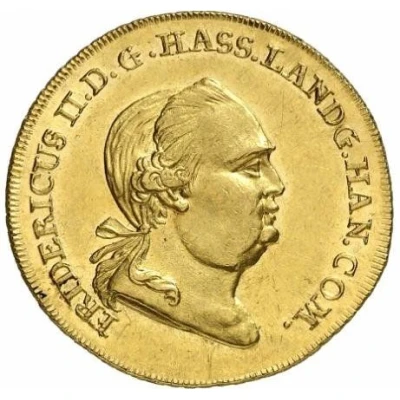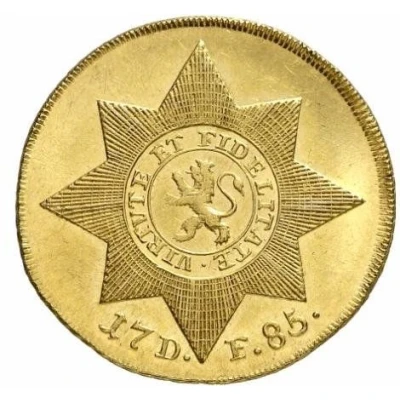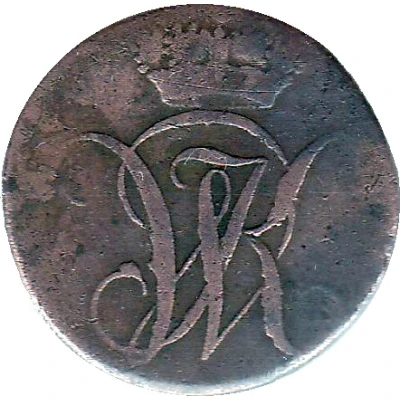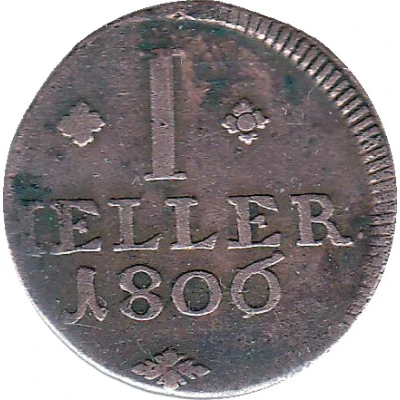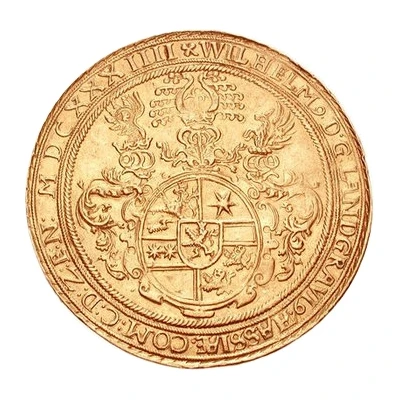
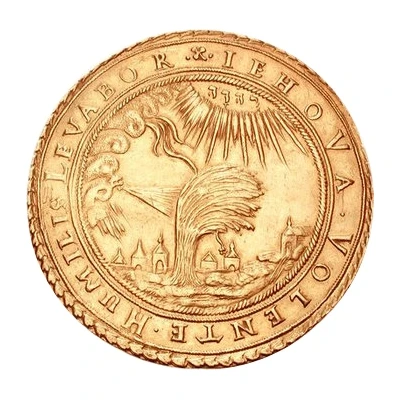

© Classical Numismatic Group, Inc.
10 Ducats - William V Gold pattern strike
1634 year| Gold (.986) | 35.29 g | - |
| Issuer | Landgraviate of Hesse-Cassel (Hesse-Cassel) |
|---|---|
| Landgrave | William V the Stable (1627-1637) |
| Type | Pattern |
| Year | 1634 |
| Value | 10 Ducats (35) |
| Currency | Thaler |
| Composition | Gold (.986) |
| Weight | 35.29 g |
| Shape | Round |
| Orientation | Medal alignment ↑↑ |
| Demonetized | Yes |
| Updated | 2024-10-05 |
| Numista | N#154633 |
|---|---|
| Rarity index | 95% |
Reverse
Willow tree being struck by lightning from clouds above, wind and rain blowing from left, radiant hwhy to right; in background, 6 houses.
Script: Latin
Lettering: IEHOVA • VOLENTE • HUMILIS • LEVABOR • (clover) •
Comment
Terentius Schmidt, mintmaster.Struck from dies of the 2 Taler silver coin. Schütz 834
This gold offstrike, of roughly 10 ducat weight, was struck from the dies of the 1634 Hessen-Kassel broad double taler -- an extremely rare coin in its own right. The only gold piece recorded for this year in the standard references is a much smaller goldgulden. We can find no other record of this unpublished offstrike, which shares the dies of the silver double taler illustrated in Schütz.
The scene of the willow tree being blown by a storm and struck by lightning is very common on the coinage of Hessen-Kassel struck during the period of the Thirty Years’ War (1618-1648). The depiction of the storm is an allegorical image intended to highlight the effect of war on Hessen-Kassel. During the Thirty Years’ War, countless militias swept through the territory, ravaging the countryside and killing a large proportion of the population. In the upper right of the scene is a shining sun representing Jehovah, perhaps a reminder of God’s presence and a hope that sunny days are ahead. Langrave Wilhelm V, who struck this coin, was a Calvinist and supporter of Sweden during the war. For part of his reign, his territory was occupied by the forces of the Holy Roman Emperor. By the time of his death in 1637, Hessen-Kassel was just a shadow of its former self.
Interesting fact
One interesting fact about the Pattern 10 Ducats - William V (Gold pattern strike) 1634 from Landgraviate of Hesse-Cassel (Hesse-Cassel) is that it was minted during a time of great economic and political change in Europe. The Thirty Years War had recently ended, and the Holy Roman Empire was in the process of dissolving, leading to a period of decentralization and the rise of smaller states and territories. The Landgraviate of Hesse-Cassel, where this coin was minted, was one such territory that emerged during this time, and the coinage issued during this period reflects the political and economic shifts that were taking place.
